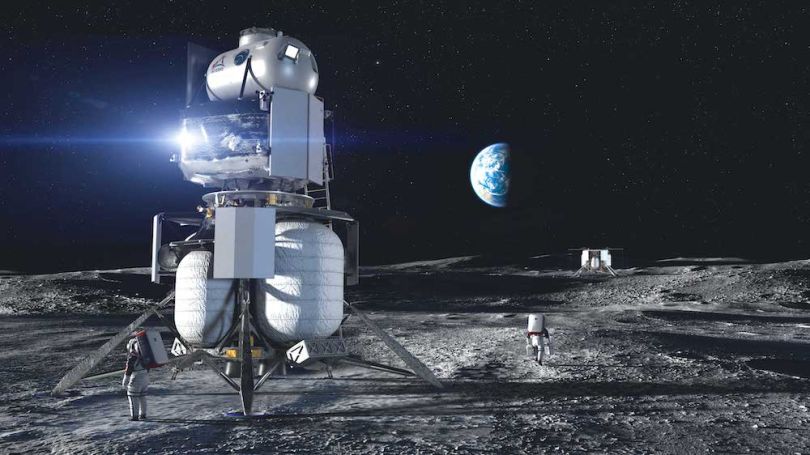SpaceX captured headlines for accomplishing something no private company has done before: launching two astronauts into orbit. Aside from the initial launch date’s delay due to weather, the historic flight of the SpaceX Crew Dragon went off without a hitch. Veteran astronauts Douglas Hurley and Robert Behnken docked at the International Space Station 19 hours after blasting off from the Kennedy Space Center in Florida.
The success of the Crew Dragon launch isn’t just a win for SpaceX. It’s also a major victory for NASA’s Commercial Crew Program, a partnership with both SpaceX and Boeing designed to develop spacecraft and rockets capable of launching humans into orbit.
While Boeing and SpaceX are working with NASA to send humans to space, that doesn’t mean they’ve cornered the market on space exploration. In fact, the agency has partnered with space exploration companies like Maxar Technologies and Blue Origin to further its efforts. Zooming in on the work these aerospace companies do with NASA is critical to better understanding the United States’ efforts to return to space — and better understanding our universe in general.

Blue Origin
Founded: 2000
Headquarters: Kent, Washington
Blue Origin in a single sentence: Blue Origin’s mission is to build reusable rockets and launch vehicles to lower the cost of space travel — to the point where millions of people live and work in outer space.
What are Blue Origin and NASA building? The Blue Origin National Team — a group made up of Blue Origin, Lockheed Martin, Northrop Grumman and Draper — was recently chosen by NASA to develop the Artemis Human Landing System. The goal of the Artemis program is to land two astronauts on the moon, including the first woman, by 2024.
The landing system developed by the group aims to bring astronauts to the moon’s southern pole and back into orbit, where the craft will dock with either the Artemis project’s Orion space capsule or the “Gateway,” a sort of miniature space station designed to orbit the moon.
In a press release, Blue Origin said its role will include leading program management, systems engineering, safety and mission assurance, and mission engineering and operations. The company will also develop the landing system’s descent element.
“NASA’s Artemis program will be the next major milestone in the history of human space flight, and we’re honored to be a part of it,” said Blue Origin CEO Bob Smith in a statement. “Our National Team brings unparalleled heritage, passion and innovation that will enable Americans to return to the lunar surface and inspire another generation. It’s time to go back to the moon, this time to stay.”
Maxar Technologies
Founded: 1969
Headquarters: Westminster, Colorado
Maxar Technologies in a sentence: Born out of the 2017 merger of Digital Globe and MDA, Maxar Technologies is a space technology company specializing in robotics, software and infrastructure.
What are Maxar and NASA building? This past February, Maxar won a $142 million NASA contract to construct a robotic arm for OSAM-1, a robotic spacecraft designed to repair and refuel satellites in orbit. They’re also behind SPIDER, or the Space Infrastructure Dexterous Robot, which is designed to assemble an antenna reflector in space and demonstrate in-space manufacturing.
The latter will be accomplished thanks to technology developed by Tether Unlimited, which has developed a device that can create a carbon beam in space. Once the beam is made, SPIDER will attach it to OSAM-1 to test its durability. Al Tadros, Maxar’s vice president of space infrastructure and civil space, told Space News that the demonstration is planned to happen sometime in the mid-2020s.
“SPIDER, in combination with our flexible 1300-class spacecraft bus and technologies for in-space operations, will enable new applications in communications and remote sensing satellites, large in-space assembled telescopes and future exploration missions that support a sustained human presence beyond Earth orbit,” said Megan Fitzgerald, a senior vice president and general manager at the company, in a statement.




